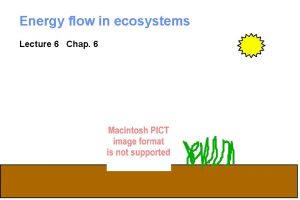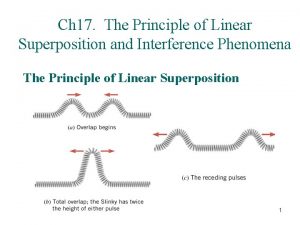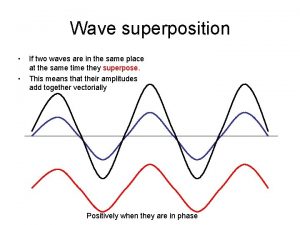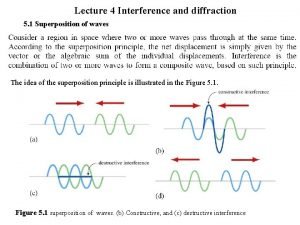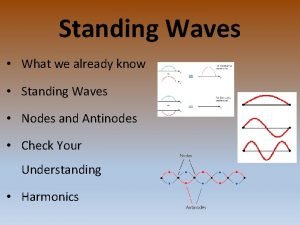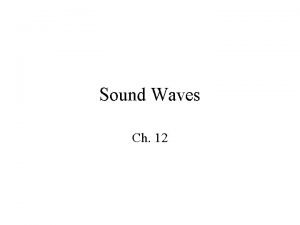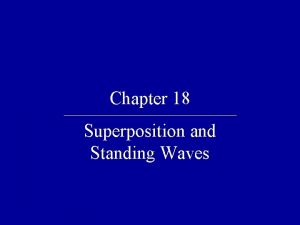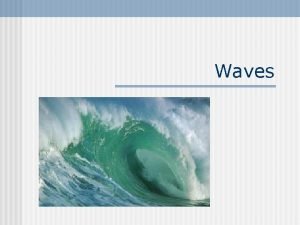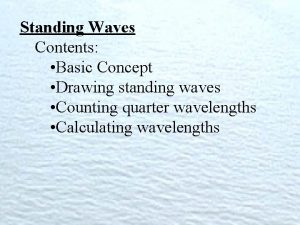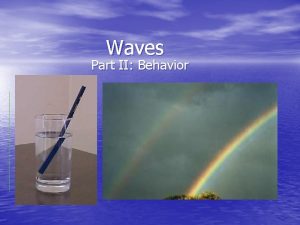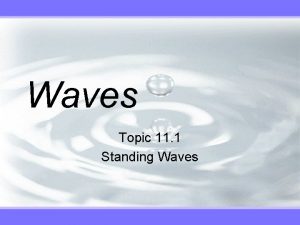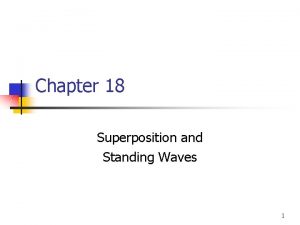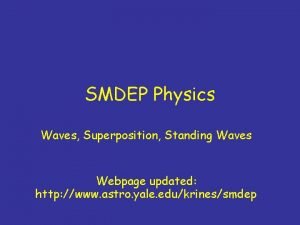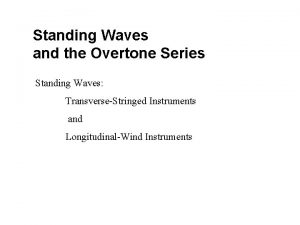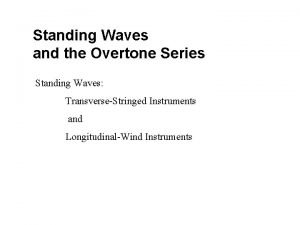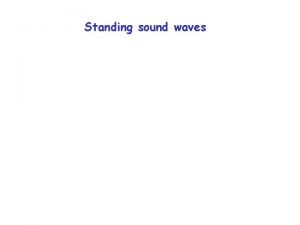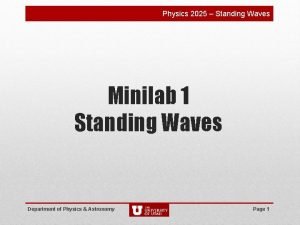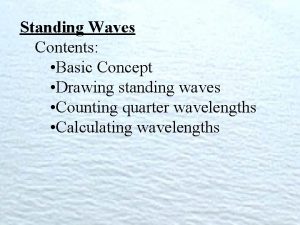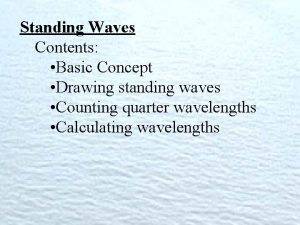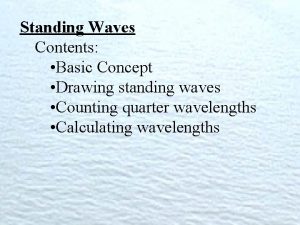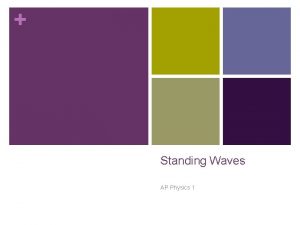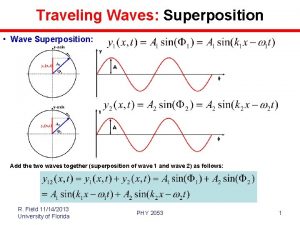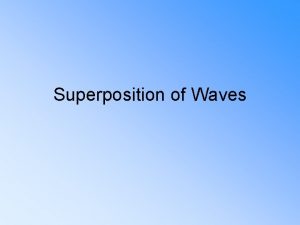16 Superposition and Standing Waves Superposition of Waves






















- Slides: 22

16 Superposition and Standing Waves • Superposition of Waves • Standing Waves • Additional: Superposition of Standing Waves, Harmonic Analysis & Synthesis • Hk: 1, 29, 33, 47, 51.

Superposition Principle

Terminology • Phase Difference: The fractional part of a period which represents the offset in peak positions of waves. • Coherence: The existence of a correlation between the phases of two or more waves such that interference effects can be observed. • Interference: The variation with distance or time of the amplitude of a wave which results from the superposition of two or more waves.

Interference • Constructive Interference: Resultant amplitude is larger than either individual wave. • Destructive Interference: Resultant amplitude is less than either individual wave.

Examples Constructive Interference: Destructive Interference:

Phase Difference

Constructive Interference



Standing Waves …a wave in which the amplitude at a given location does not vary with time. Standing Wave Features: • Amplitude is zero at fixed ends • Nodes (other places with zero amplitude) • Anti-nodes (places with maximum amplitude)

Standing Wave: Both Ends Fixed

Standing Wave: One End Fixed, One End Free



fourier analysis


Summary • Superposition results in interference • Interference can occur due to Path Difference • Standing Waves, and conditions for • Harmonics and Fourier Analysis • /





 Difference between standing crop and standing state
Difference between standing crop and standing state The principle of linear superposition
The principle of linear superposition Principle of superposition waves
Principle of superposition waves Superposition of waves
Superposition of waves Node and anti node
Node and anti node Travelling and standing waves on a string
Travelling and standing waves on a string Sonic spectrum definition
Sonic spectrum definition Standing waves quiz
Standing waves quiz Standing waves
Standing waves Draw a picture of standing waves with n=3
Draw a picture of standing waves with n=3 Compare and contrast p waves and s waves using venn diagram
Compare and contrast p waves and s waves using venn diagram Difference between electromagnetic and mechanical waves
Difference between electromagnetic and mechanical waves Mechanical waves characteristics
Mechanical waves characteristics Mechanical and electromagnetic waves similarities
Mechanical and electromagnetic waves similarities Long waves and short waves
Long waves and short waves Difference between matter waves and electromagnetic waves
Difference between matter waves and electromagnetic waves Mechanical and electromagnetic waves similarities
Mechanical and electromagnetic waves similarities Surface waves and body waves
Surface waves and body waves Mechanical and electromagnetic waves
Mechanical and electromagnetic waves The difference between constructive and destructive waves
The difference between constructive and destructive waves Sound waves are electromagnetic waves true or false
Sound waves are electromagnetic waves true or false The wave chapter 13
The wave chapter 13 Whats a reflected sound wave
Whats a reflected sound wave
